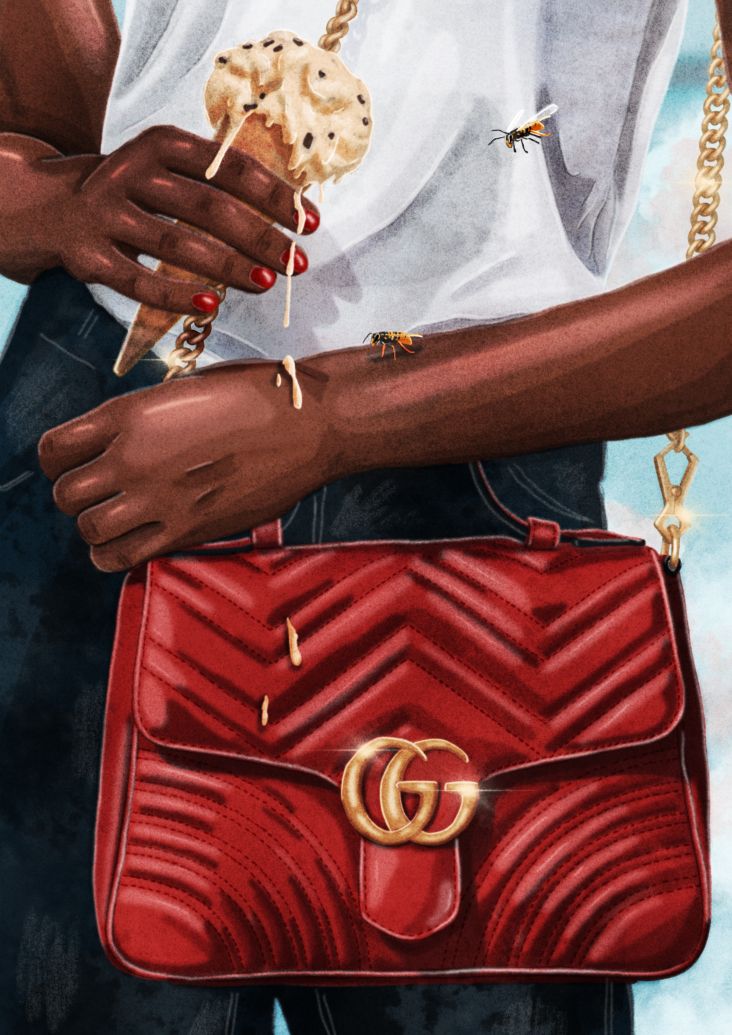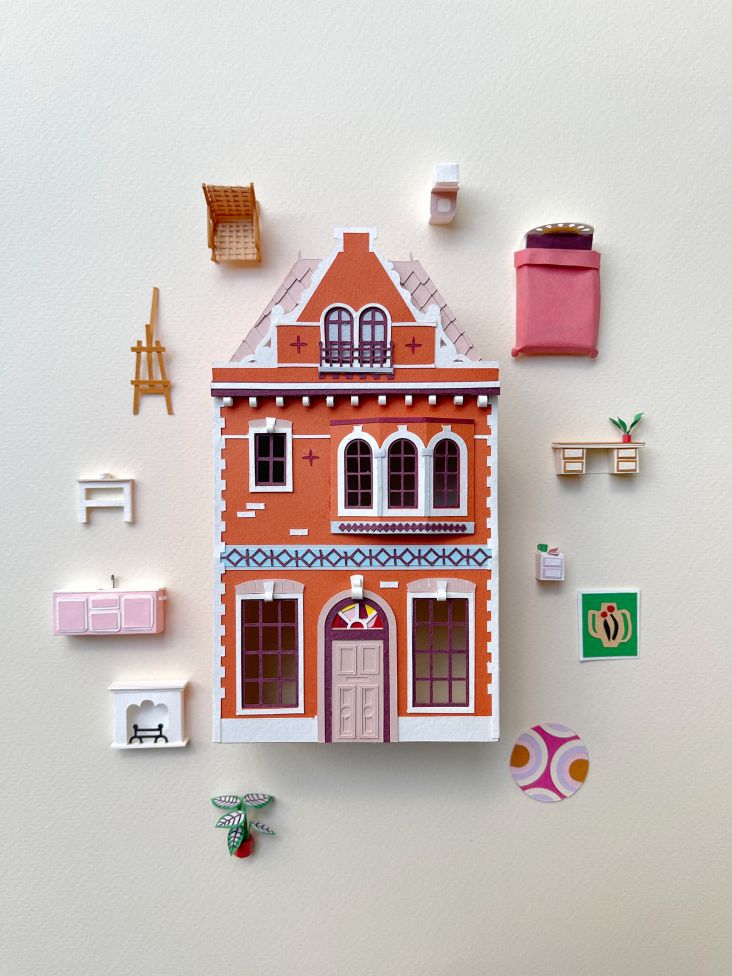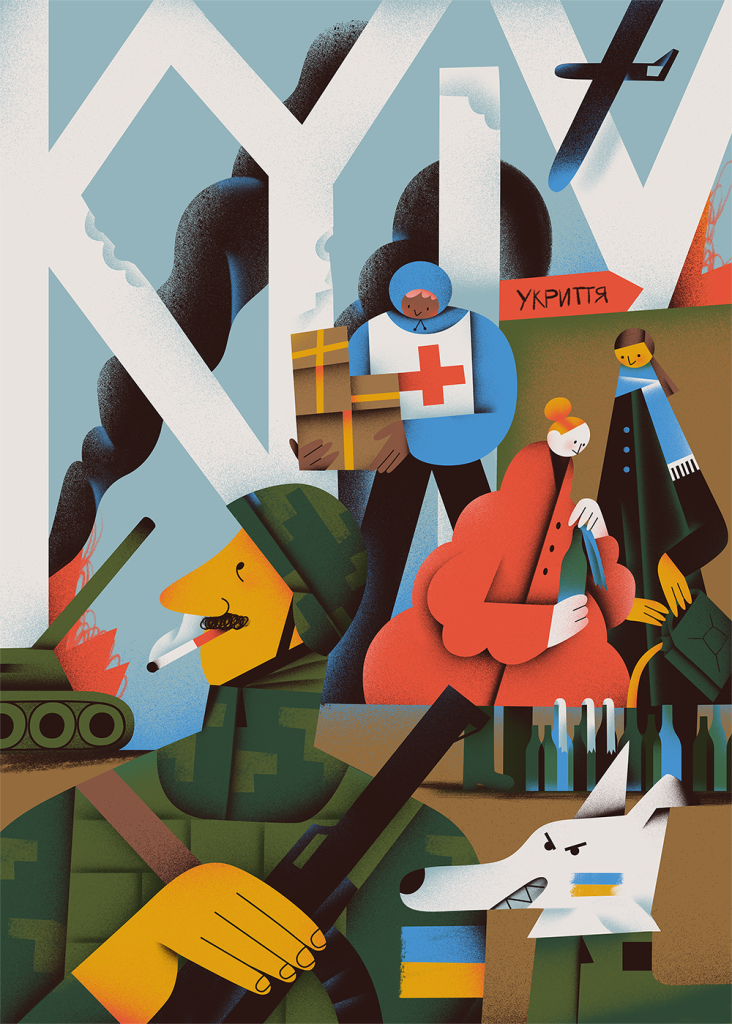Why the influence of video games is so important for today's artists and designers
Video games have come a long way since the days of Pong, and teenagers locked themselves away in their rooms playing early Super Mario. Worth four times that of the global film industry today, gaming has seen considerable advancements in recent decades and counts for millions of jobs worldwide, while the influence of digital art on today's designers continues to grow.
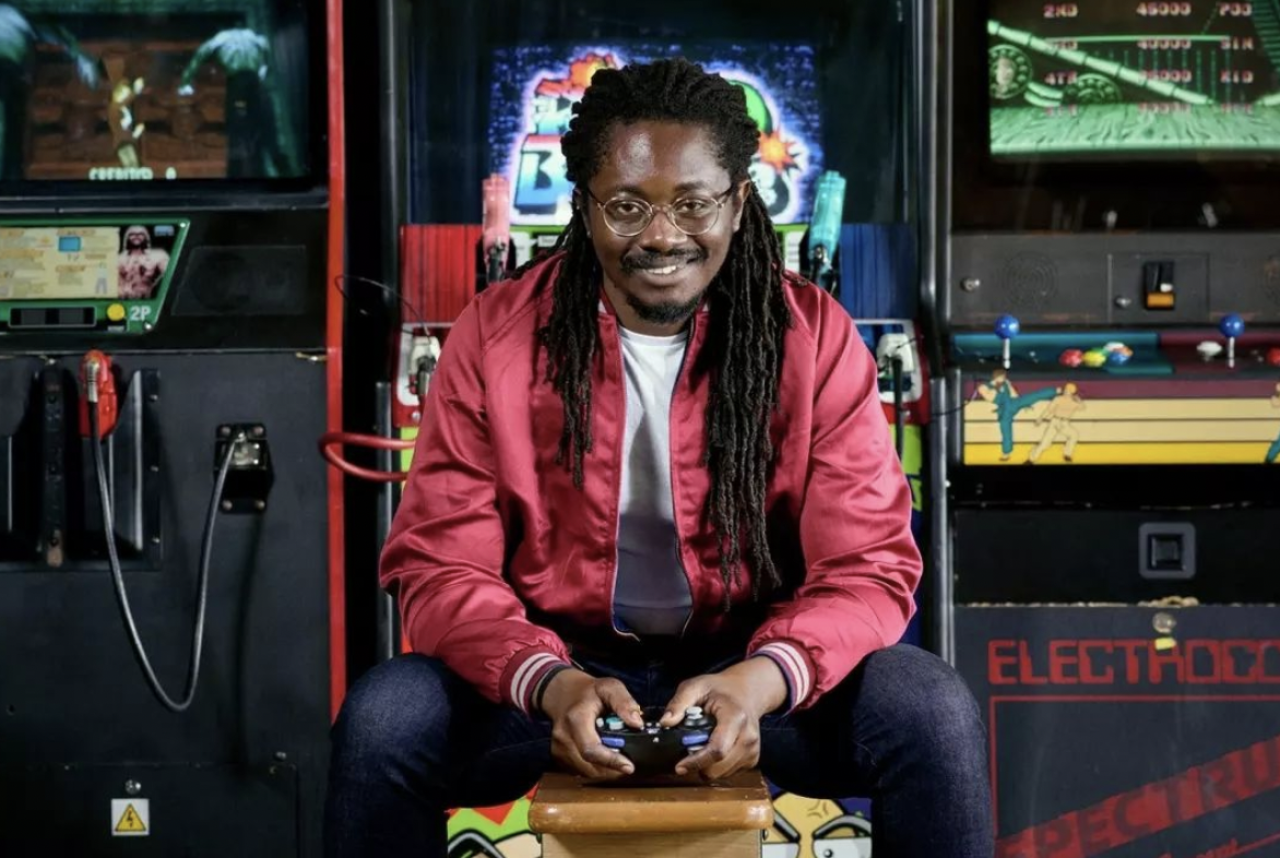
Larry Achiampong’s love of video games continues to inform his work today. Image: @emileholbaphoto.
A section of Larry Achiampong's show at the MK Gallery in Milton Keynes is called The Gaming Room. Here you can play some of the best video games from the last 30 years, from Donkey Kong to The Legend of Zelda.
The British-Ghanaian artist, who works in film, sculpture, installation, sound, collage, music and performance, is excited to have his first major solo show, which has his debut feature-length film Wayfinder, as well as a large presentation of Pan African flags.
Achiampong was one of those teenage boys who spent a lot of time playing video games, which had a profound effect on him and proved to be the bedrock of his career later in life.
"The very first video game that inspired me was from 1988, a ninja game called Shinobi," the artist says. This hack-and-slash action video game was created by Sega and was seen as a game changer. The bold and brash logo had Shinobi written in large gold letters, while the Chinese script for it was inscribed behind in a vibrant red.
More than a shoot 'em up
The game was memorable for the high quality of graphics, gameplay and music. This was in the heyday of video games, and the Shinobi franchise sold more than 4.6 million copies.
"I really remember the quirky pastel colours of the New York city streets in the game," he says.
One of the things Achiampong noticed in particular that caught his attention was a movie poster on the background of a famous face. "It was of Marilyn Monroe. The designers were able to create a poster of Marilyn – it was a reference of sorts to Andy Warhol – I didn't know all these things at the time, but I remember seeing this iconic image and thinking, this is so cool. The music was amazing as well. Awesome jazzy hip sounds."
Other elements in the game would influence Achiampong later in life. "The game is a side scroller, so you are moving across the screen – you have the idea of travel – the background changes as you move along, so that was the first game that had any impression on me."
The design, technology and storytelling have moved on immeasurably in video games. There's gesture control, facial recognition, voice recognition, cutting-edge graphics, high-definition displays, augmented reality and virtual reality.
As someone who still loves video games, Achiampong says: "There are different levels of immersion, from the script writing of the stories to the connectivity. Now you have online gaming. There is a game I play very regularly called Splatoon, created by Hisashi Nogami. You can play alongside people online. You can wear different fashions and become a different persona -based on a squid or octopus."
The game will appeal to artists and designers as you can use various weapons that produce and shoot coloured ink or wield an enormous paintbrush. It's not violent, as the aim is to cover as much territory as possible in a turf war. You don't kill the players but splat them.
From isolation to interactivity
With super-fast broadband and 5G, the solitary nature of video game playing evaporates. "I play with people I know across the planet. It's got to a new stage of interactivity."
Video games, in some ways, have overtaken film as the biggest entertainment medium, where a game can cost more to make than a feature film. The most expensive video game to make was Metal Gear Solid V: The Phantom Pain, costing $80 million. That figure will likely rise as the latest technology is implemented in games.
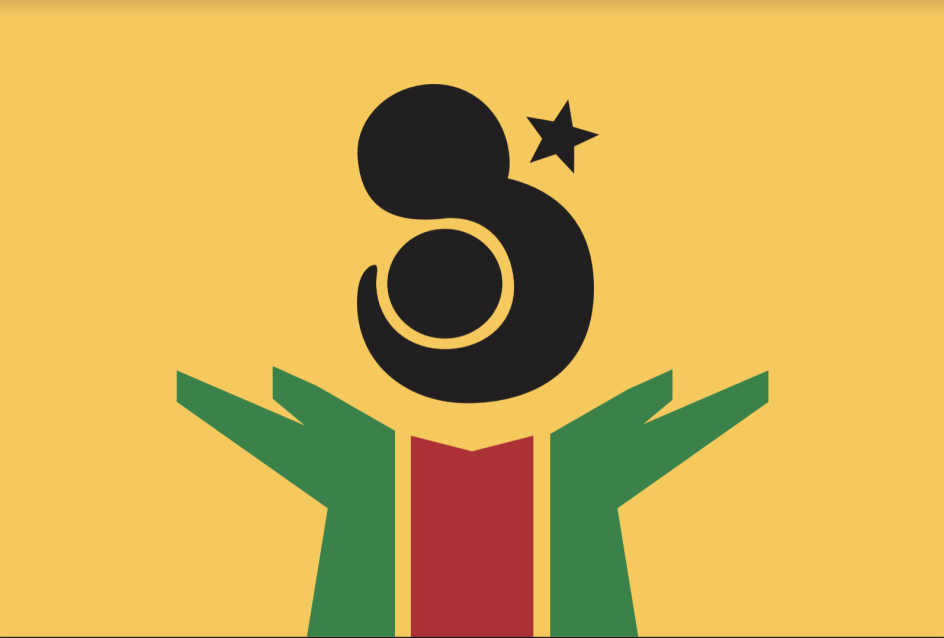
Mothership. Achiampong uses Pan African colours that speak symbolically to African diasporic identities.
Still a big fan of games, one of Achiampong's favourites today is Super Metroid. It received acclaim for its graphics, gameplay and music. It's often mentioned as one of the greatest games of all time. As of December 2021, the Metroid franchise has sold more than 20.19 million copies globally.
With all the fancy tech, such as an intricate inventory screen showing a holographic moving or still image, there still needs to be the emotional impact of the story. Having a female intergalactic bounty hunter as the main protagonist was important for Achiampong. "I was raised by black women, and to see a woman as a central character in a video game is a big thing to me. Exploring identity and what it means to be 'othered'."
One of the most comprehensive surveys of racial representation in games was a 2009 report that analysed 150 of the most-played titles. The study found that 10.7% were black characters.
Achiampong picks up this thread. "There are black characters in video games, but there is a lack of representation."
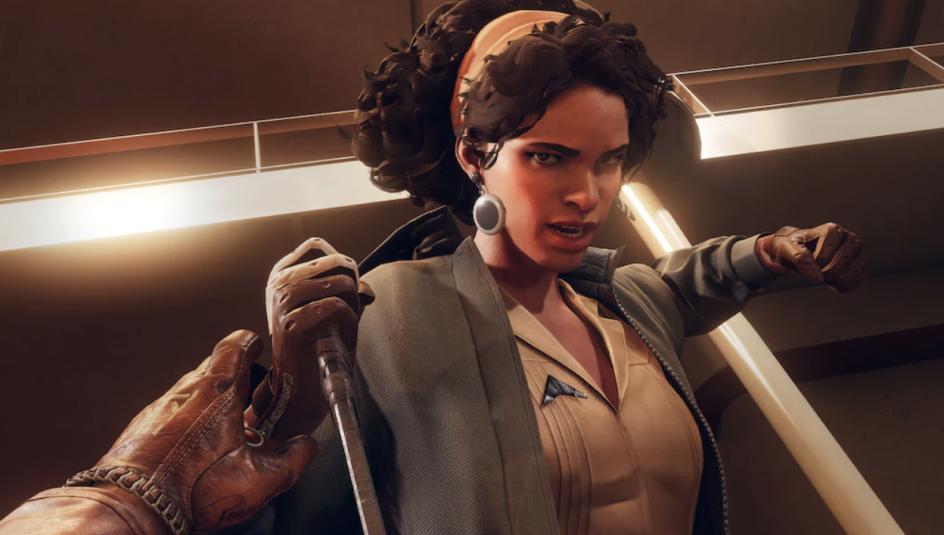
Deathloop, a first-person shooter video game has two black protagonists - Colt and Juliana. Image: Arcane.
But times are a'changing. There's news about a new video game in development, with Marvel's Black Panther character at its centre. The demand is there, borne out by the fact that Black Panther: Wakanda Forever grossed $733 million at the box office.
Working under the codename Project Rainier, it will be published by EA Games. There are reports that it will be an "open-world single-player game" in which the player becomes the new Black Panther. There are no further details on its release date, but it's said to be in development.
Achiampong also talks about Deathloop, a first-person shooter video game developed by Arkane Lyon and published by Bethesda Softworks. The game has two black protagonists - Colt and Juliana. It was praised by critics for its art design and won Best Art Direction at The Game Awards 2021.
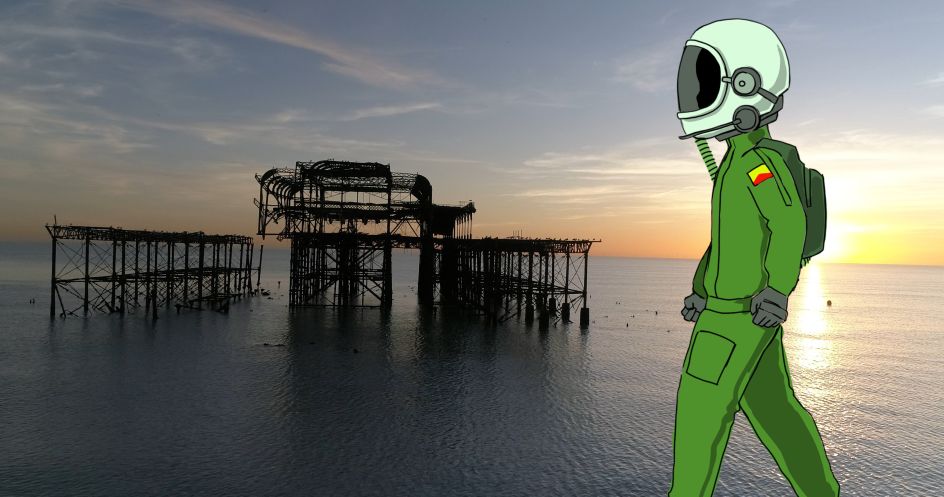
Larry Achiampong Reliquary 2 2020. Single Channel 4K Film With Stereo Sound. Commissioned By John Hansard Gallery. Courtesy of The Artist & Copperfield London.
But these are the exceptions, says Achiampong. "That tends to be a rarity. Because people of colour statistically buy more video games than white people collectively. That lack of representation, that obvious aspect of racism, is a thing. Creating a video game is something I'd love to do."
Finally, Achiampong has achieved his first major solo exhibition, which includes the feature-length film Wayfinder, which follows a young girl's journey across England.
The show was first put on at the Turner Contemporary Gallery in Margate earlier this year. Senior curator Fiona Parry approached Achiampong and asked him if there was anything he wanted to make. "I'd made a few short films and dreamed of making an even longer film that could stretch towards feature length."
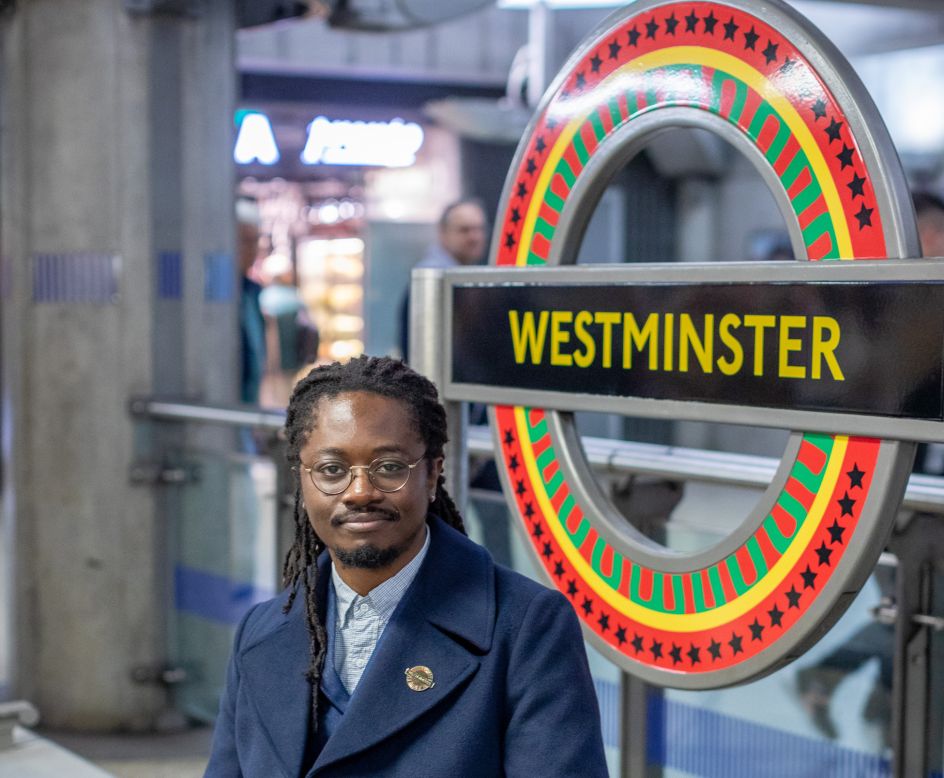
Larry Achiampong at Westminster Underground station which reimagines the iconic London Underground logo in Pan African colours.
The result is the 83-minute film, Wayfinder, commissioned by Turner Contemporary with MK Gallery and BALTIC Centre for Contemporary Art. "I was playing with the story of a young black girl travelling across England and coming across different characters and moments."
This island nation
Elements in the film touched on the future, such as a pandemic. There are some fun elements but also serious conversations around depression, as well as conversations regarding migration. The latter is a subject close to Achiampong's heart. "This island nation is built upon migration, like many others. Without migration, I wouldn't be here.
The artist says the project was the most difficult in his career, as it was shot, developed and recorded during the pandemic. There were points when I was asking myself I wonder if I would be able to pull through this – it's really tough. I'm glad that I was able to and had a great team to work with."
Larry Achiampong: Wayfinder is now at MK Gallery in Milton Keynes. The film is a high point for the exhibition. It's an extremely personal project for the artist. "The central character in the film is called The Wanderer; she is based on my sister. She is about a year and a half younger than me.
"We have different personalities; she is more outgoing than me. It acts as an ode to her – looking up to her – appreciating that fearlessness and that bravery. It also centres around experiences of black womanhood. I think about my mum and the aunties that raised me. It is an opportunity to open up that space to show respect."



















